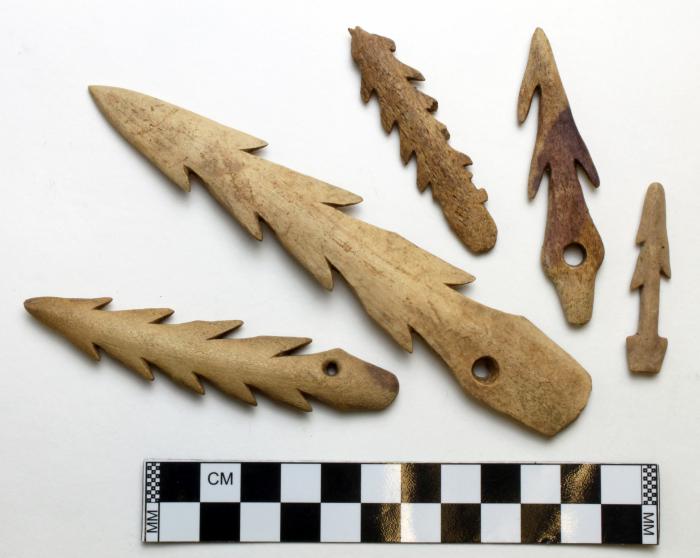Barbed — Cukingq'rtuq

Alutiiq hunters carved barbs into a variety of weapons. This included harpoon heads, arrowheads, leister prongs, and fish hooks made of strong, shock-absorbing bone, as well as sharp-edged lance heads ground from slate. These barbs were carefully designed to grip an animal’s flesh. Barb size and spacing were important considerations and varied by weapon type. Harpoons had large, widely spaced barbs designed to contact as much animal flesh as possible. This helped the harpoon stay in place as an animal dragged it through the water. In contrast, arrows and leisters had many small closely spaced barbs along a slender shaft, designed to deeply penetrate small prey.
Despite these general patterns, craftsmen created many different numbers and configurations of barbs, likely reflecting their own preferences. Many harpoon heads were symmetrical with pairs of evenly spaced barbs on either side of a central shaft. Others had a row of barbs on one side, or small barbs on one side, and large barbs on the other.
About 2500 years ago, Alutiiq people added a non-barbed harpoon to their tool kits, which they used alongside barbed weaponry. This new projectile, known as a toggling harpoon, was triangular with a sharp tip. It was designed to penetrate an animal’s skin and turn, securing the point in the muscle beneath the skin. These harpoons were small, about the length of your thumb, and probably used to hunt seals.
